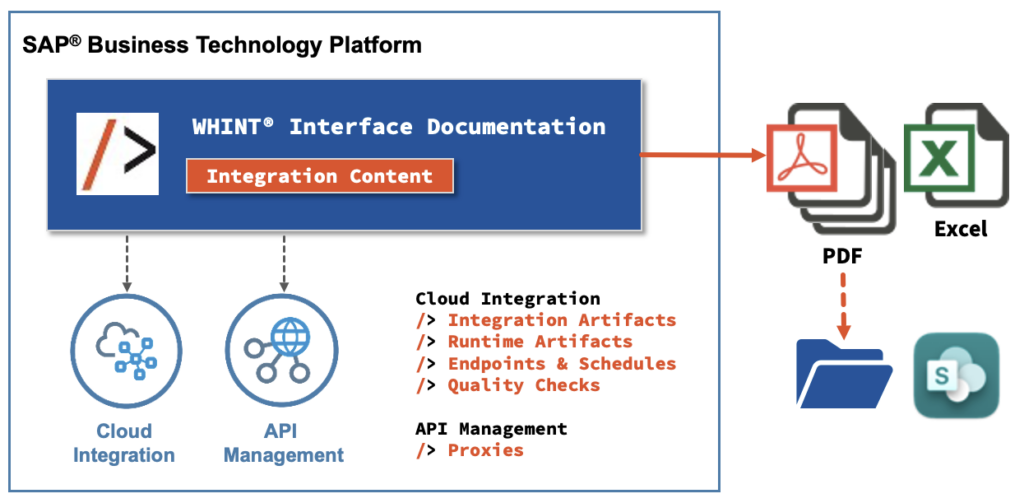This solution creates an automatic documentation of your SAP API Proxies by generating PDF documents into SharePoint as part of WHINT Interface Documentation.
Features
- Administrative Information (Description, Metadata: Name, Title, Type, Status, Created/Changed by/on), URL
- Usage in API Products
- Proxy, Target Endpoint
- Inbound Policies, Outbound Policies, Route Rules
- Resources (Scripts, XSLT, …) as attachments
- API Management Product Details with usage in API Applications, Quotas
- API Providers with Connection, Catalog Service Settings, Authentication
- One PDF per API Proxy is created
- The PDFs are stored on an SFTP, SharePoint or any other document management service
- Your individual company logo can be used
The add-on runs periodically (e.g. weekly) and generates the documentation of your API Management integration content automatically.
WHINT Interface Documentation helps to automate the technical documentation process (keeps the documentation always up to date).
The solution is using the Standard OData API of SAP API Management and can be deployed on your Cloud Integration tenant as an Integration Package or provided as a service (where we would receive read access from our SAP Cloud Integration tenant).
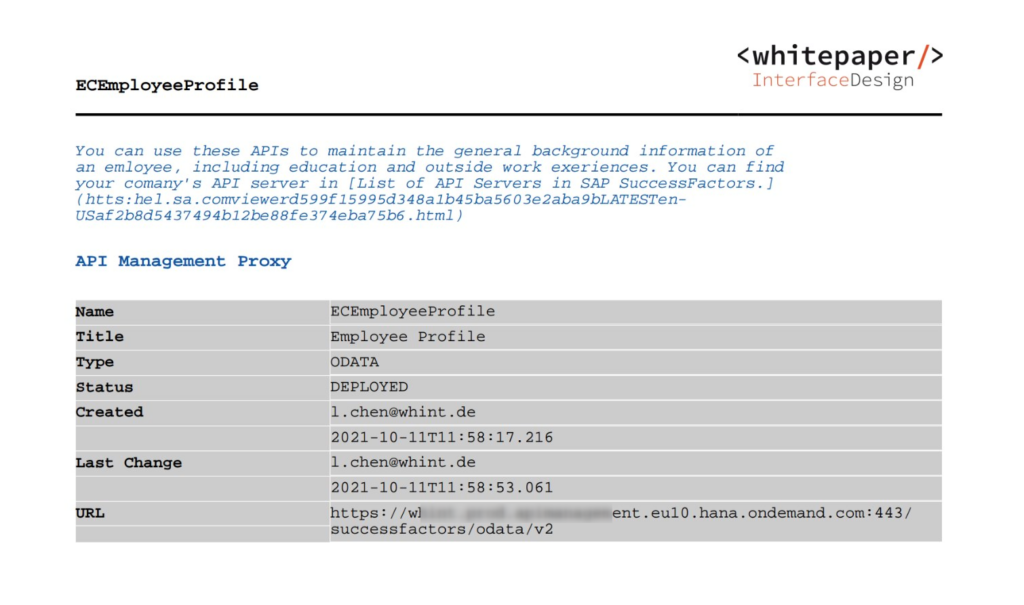
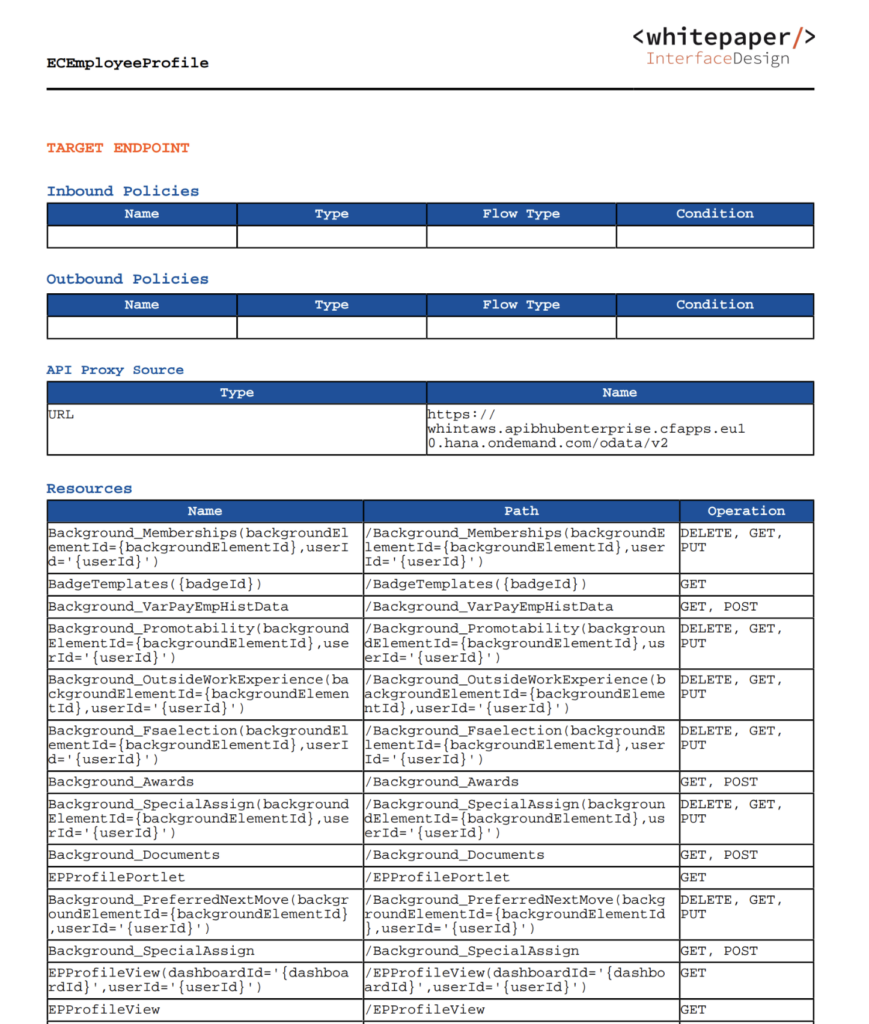
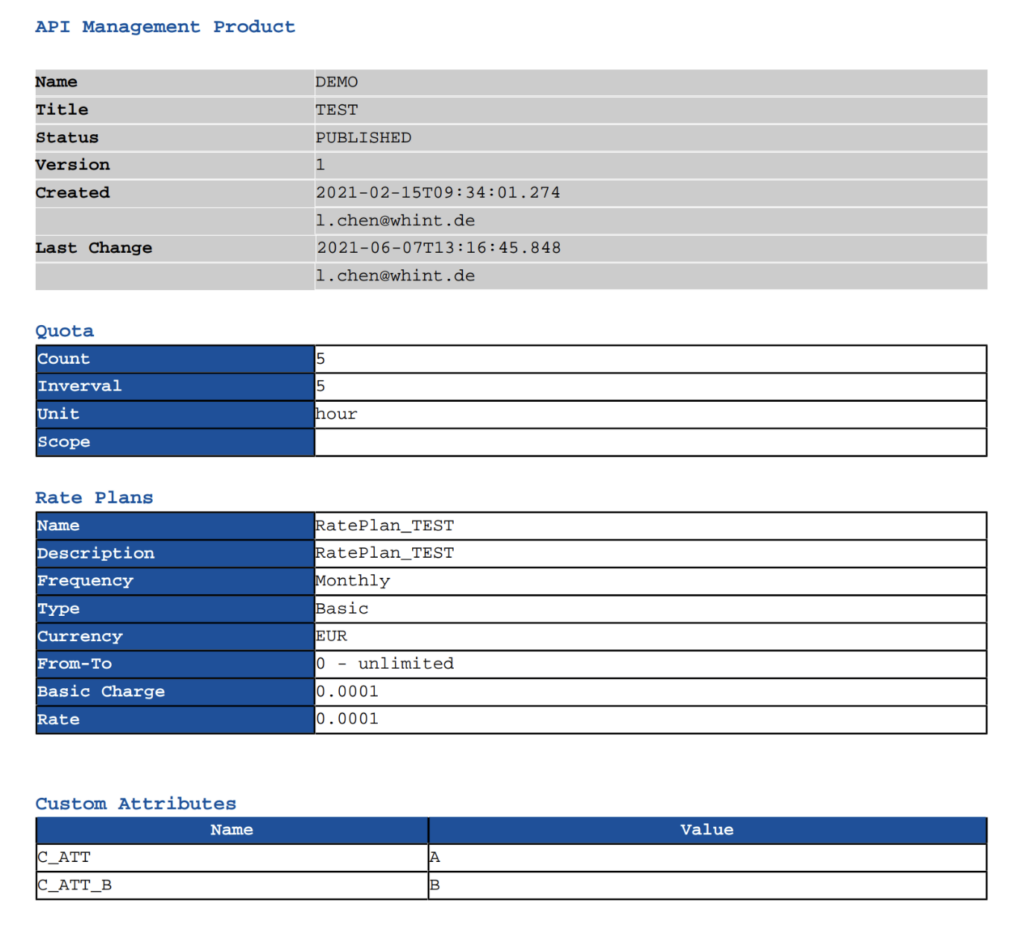
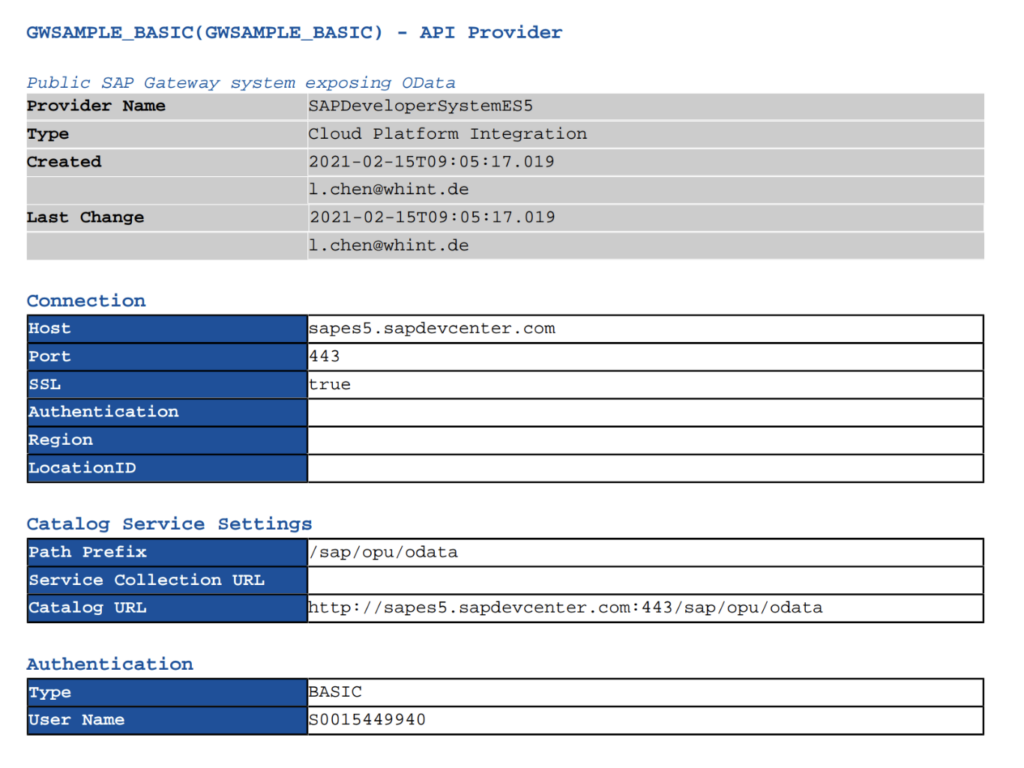
- Import the ZIP file (Integration Package) provided by Whitepaper InterfaceDesign as an Integration Package into your tenant
- Configure the receiver integration flow (see Configuration Guide)
- Configure the main integration flow
- Create a dedicated API user to access the API Management Content and Administration.
- Required Roles: see Technical User Guide
2. Create the User Credentials (OAuth Client Credentials)
- Manage Security Material -> Add User Credentials
3. Configure the main iFlow WHINT IFD API Management
- Enter the API portal URL of your tenant (taken from the browser URL)
- Enter the credential to access
4. Configure one of the storage iFlows, e.g. WHINT IFD – PDF 2 SharePoint (this iFlow processes each PDF individually and stores them to Sharepoint Online.
5. Select the timer configuration (when the documentation shall be created)
6. Deploy the integration flow

